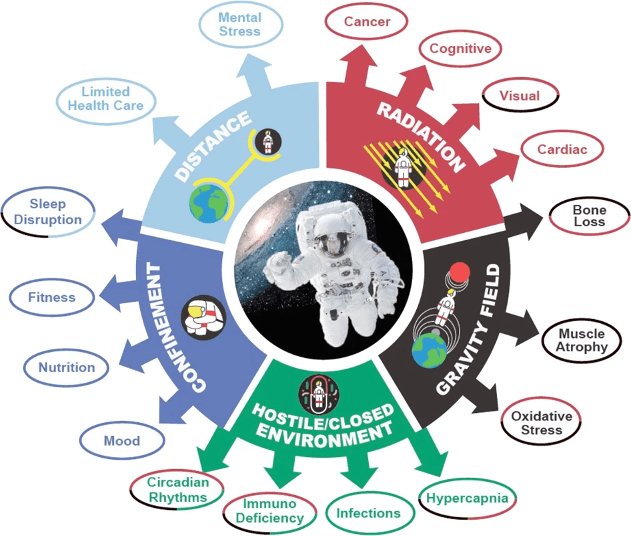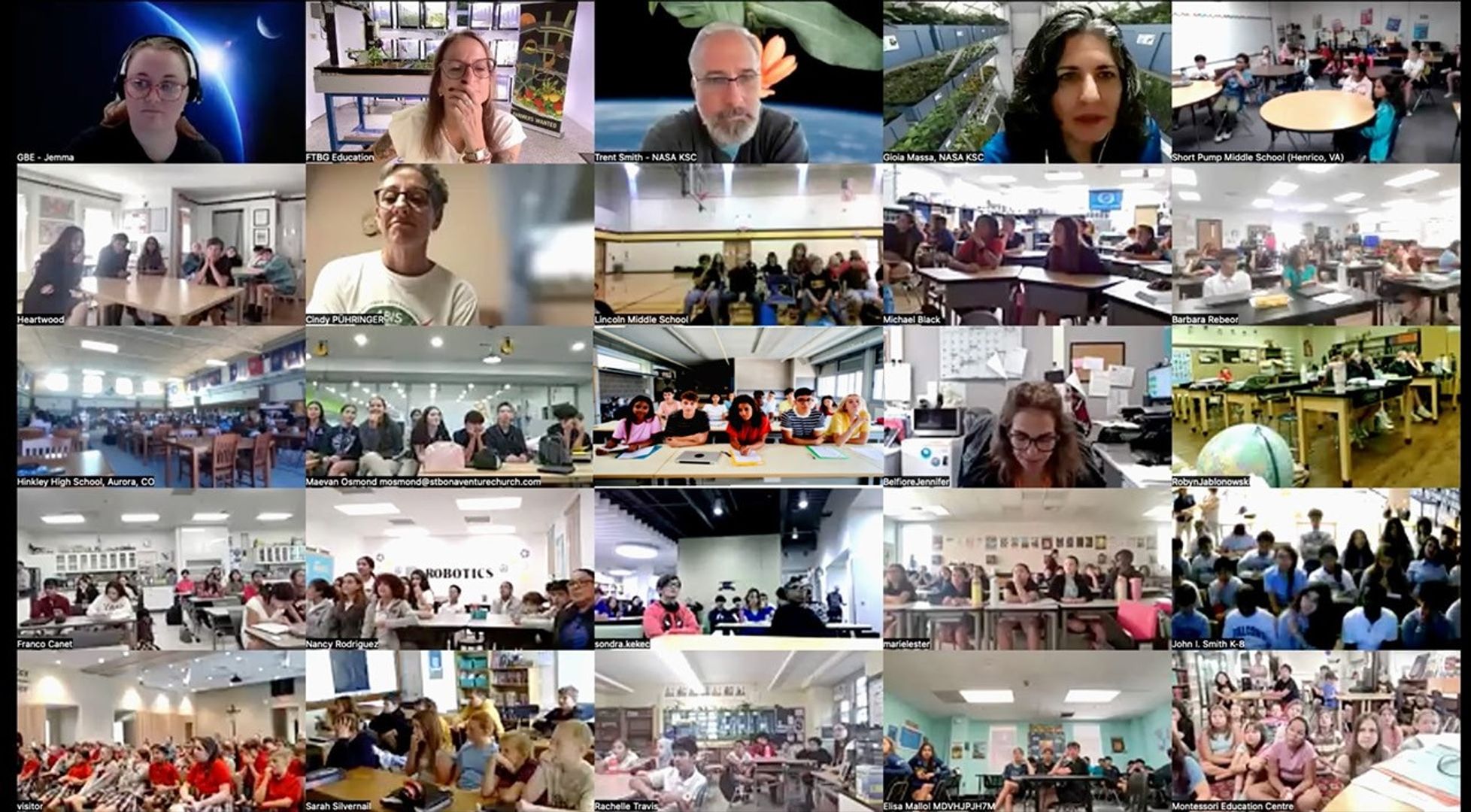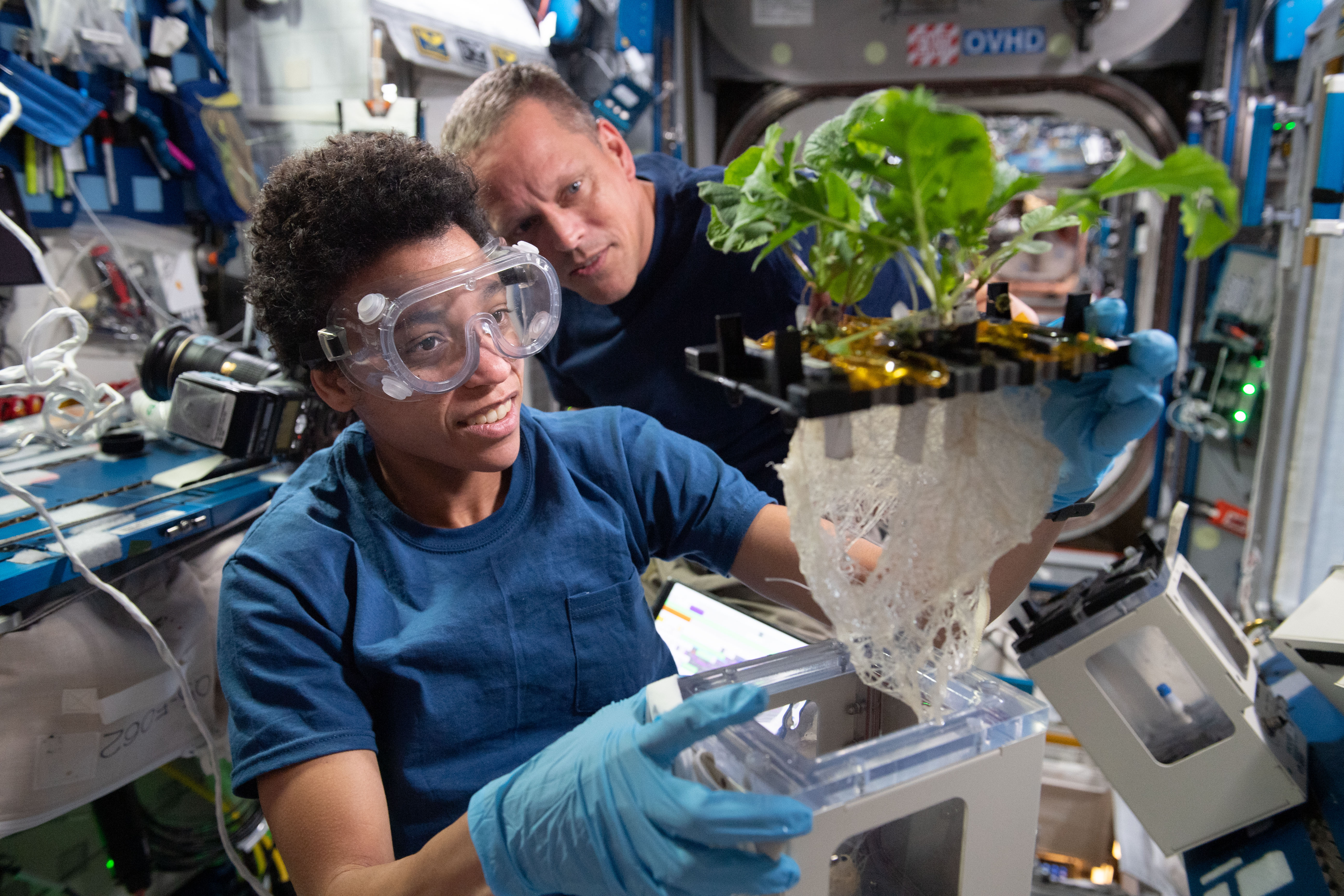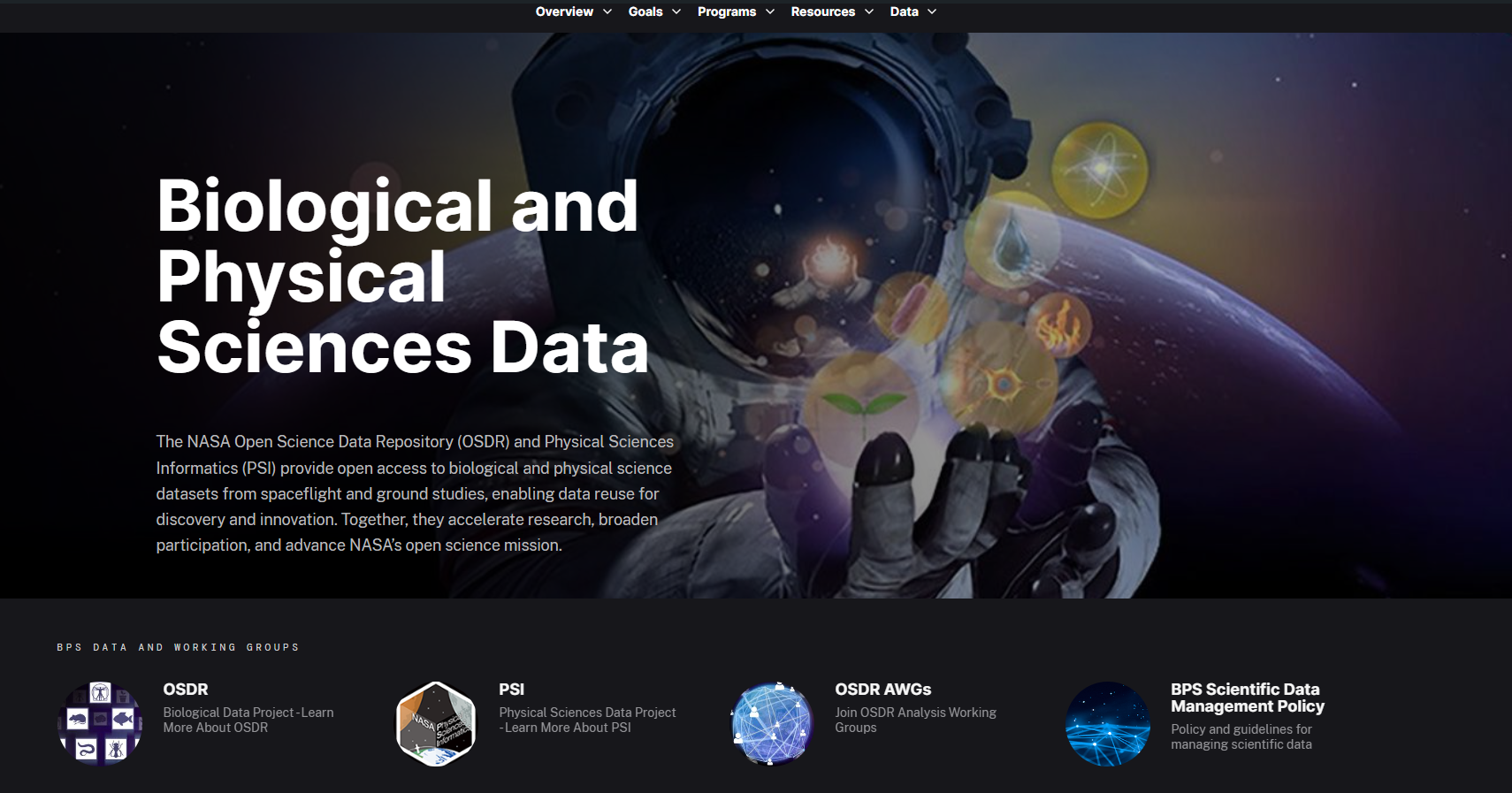PROJECT
Rad-Bio-App
SNAPSHOT
A NASA-sponsored team has developed a discovery environment that enables researchers to explore information on radiation exposure from numerous spaceflight experiments and extend our understanding of how radiation affects life forms in space.
Spaceflight significantly increases exposure to ionizing radiation, creating an environment that is not only detrimental to plant and animal life, but one that is much different from that commonly experienced on Earth. Mitigating the effects of radiation exposure represents a critical challenge for future spaceflight missions. Thus, understanding the effects the crew and other onboard organisms will experience during spaceflight is a crucial area of research. Numerous experiments have exposed different organisms to a wide range of space radiation environments. However, data on the precise characteristics of the investigation and especially on the radiation exposure experienced is often complex to access and understand, even for experts in the field of radiation biology.
A NASA-sponsored research team at the University of Wisconsin has developed the Rad-Bio-App database to help all levels of researchers—from experts to interested citizen scientists—explore space biology-related radiation data. Rad-Bio-App is an interactive, relational database that links previously conducted space biology experiments according to the level and type of radiation exposure. It also links experiments sharing other common features such as the organism studied or mission hardware used. Rad-Bio-App enables the user to filter through this web of relationships and easily “drill down” into the results from studies with similar radiation environments or features. This ability to interactively sort and filter allows researchers to significantly extend the insights drawn from existing results and adds value to the considerable investments already made in conducting these experiments.
But where does the data fueling Rad-Bio-App come from? Regular access to space has allowed researchers to explore how this environment impacts biological systems, including crew, animals, plants, and microbes that accompany them. NASA’s GeneLab data repository has aggregated results from many of these studies, including descriptions of their radiation environments. Our team has capitalized on this resource to develop Rad-Bio-App as a graphical discovery environment. We imported the GeneLab-curated data from missions on the International Space Station, the Space Shuttle, and free-flying satellites such as the Russian Bion and Foton spacecraft. In addition, we added results from a variety of experiments using terrestrial radiation sources such as particle accelerators.
To help provide context for future missions, we also gathered the radiation exposure data from the Mars Curiosity Rover mission while it traveled to Mars and after it landed on the planet’s surface. For the Moon, we used radiation data from the Apollo astronaut’s radiation monitors, recent robotic explorers, and the Lunar Reconnaissance Orbiter. The Moon and Mars data will enable researchers to place each study in the context of the predicted radiation environment of future missions beyond Low Earth Orbit.
Rad-Bio-App allows users to interactively filter experiments according to their radiation exposure and many other elements of the experimental design. Thus, Rad-Bio-App can be used to explore radiation responses determined by previous spaceflight experiments and help put these experiments in the context of radiation exposures likely to be encountered in future exploration missions. For example, this tool was used to identify datasets within the GeneLab data repository where mice had experienced similar radiation doses to those expected during a flight from Earth to Mars. These datasets contained analyses of the patterns of gene expression (see figure a, below). Each individual study provides some insight into possible genetic changes in the spaceflight environment. Moreover, Rad-Bio-App allowed researchers to analyze patterns of altered gene expression across multiple studies selected for their common Earth-to-Mars-like radiation exposure and shared focus on responses in the mouse. Such cross-study analyses identified clusters of genes related to different biological functions that are seen across multiple samples (see figure b). These gene clusters provide targets for further research into how biology might respond to the radiation dosage experienced while traveling from Earth to Mars, and represent new targets for potential countermeasures to mitigate the harmful effects of radiation exposure.
Rad-Bio-App provides critical contextual information on radiation that enables researchers to extend the analysis of existing space biology datasets. The database architecture of Rad-Bio-App is designed to continuously incorporate the wealth and diversity of future space biology studies. Thus, this tool should help provide an ever-expanding insight into how life forms are affected by the complex and varied space radiation environment.
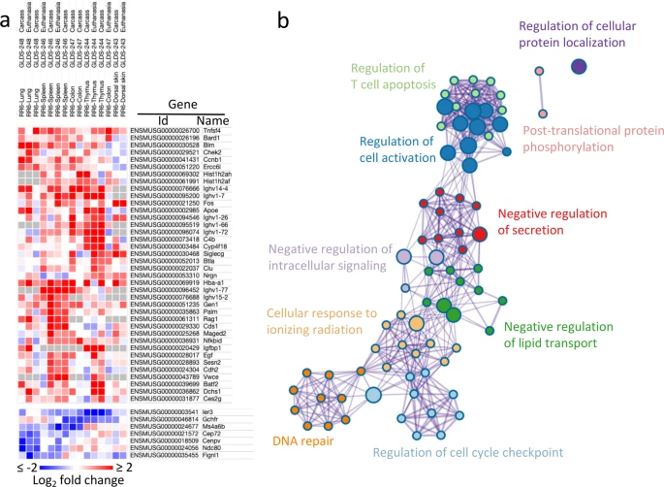
PROJECT LEAD
Dr. Simon Gilroy, University of Wisconsin-Madison
SPONSORING ORGANIZATION
NASA Biological and Physical Sciences Division, NASA Ames, and the University of Wisconsin-Madison.





























